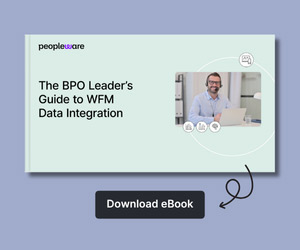Derek Lewis of Maintel discusses the potential impact conversational analytics can have on customer experience.
Customer-facing organisations are sitting on a goldmine of information and insights. You may not realise it, however, as they are buried in the voice recordings and text-based interactions stored in your contact centre and back-office operations.
Within the call centre environment, speech analytics has long promised to be the key to unlock this treasure trove and deliver valuable insights to the business, generating additional revenue, driving efficiencies, and fixing broken processes.
However, traditional analytics solutions often proved prohibitive to deploy due to cost and complexity. They were too labour-intensive and time-consuming to deliver a timely return on investment and this mitigated against successful implementation.
Speech analytics was a “dark art” accessible only to those with deep pockets and large project teams able to spend weeks – or even months! – defining and building categories to report against.
The good news is that technology has evolved and there is now the possibility to implement speech analytics solutions for organisations of all sizes much more swiftly, easily, and cost-effectively.
A new generation of conversational analytics is now available with indexing of voice transcripts and text-based conversations that are augmented and enriched with AI and NLP functionality.
This helps to automate the analytics process and highlight both expected trends and outcomes, as well as hidden issues or broken processes that might otherwise have been overlooked.
As much of this can be delivered with minimal user intervention, it is realistic and affordable for businesses to start small and scale the solution from as few as twenty seats through to whole communities of agents and back-office staff.
Designed from the ground up as interaction analytics solutions, these are de-coupled from simply being a bolt-on to recording platforms and will instead integrate with many elements of the customer experience environment including WFM, CRM and omni-channel interactions such as: voice, video, and chat.
Traditional compliance and agent performance management use cases are still valid and relevant, of course. But modern solutions can also effectively deliver insights relating to business optimisation across organisations and not simply to improve operational quality management in a traditional call centre.
Solutions may be pre-configured to measure against specific metrics and KPIs, such as:
- Efficiency: Highlight broken processes and drive efficiency gains by identifying interactions that feature long silences, negative sentiment, overtalk etc.
- Sales: Drive revenues by identifying and reinforcing effective behaviours in your sales interactions
- Compliance: Avoid risk of fines or reputational damage by ensuring script adherence and protecting brand values
- Quality Management: Support agents and advisors to improve customer experience
Advanced interaction analytics solutions can be used to dramatically shorten in-call and post-call interactions, while improving and expanding automated processes. Artificial Intelligence and Natural Language Processing, used in conjunction with each other, work to evaluate the dialogue between the member of staff and the customer, and can automate the identification of issues, intent, and actionable insights.
Some solutions can automatically convert a full version of a recorded voice conversation and use NLP and AI to create a summarised version that could connect to and update your system of record.

Derek Lewis
Such approaches have the potential to remove a tremendous amount of work (and associated costs) in some contact centres, learning from every interaction to create an ever-growing, constantly improving, knowledge base to assist development of your automated systems.
It can be best practice for organisations looking to invest in analytics solutions to investigate which other business functions may also have related requirements and consider selecting a solution that can add value reporting against business critical KPIs, and allow for automation of time-consuming tasks, using combined budgets to get the best overall return on investment.
Author: Guest Author
Published On: 8th Dec 2020 - Last modified: 15th Dec 2020
Read more about - Guest Blogs, Maintel





































